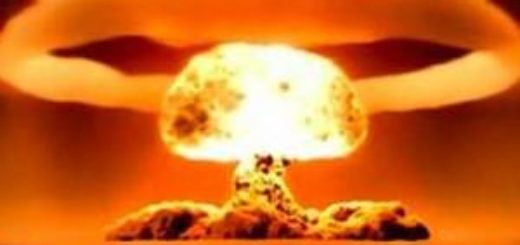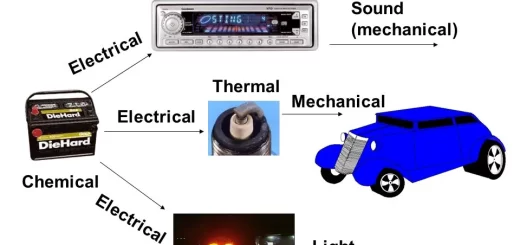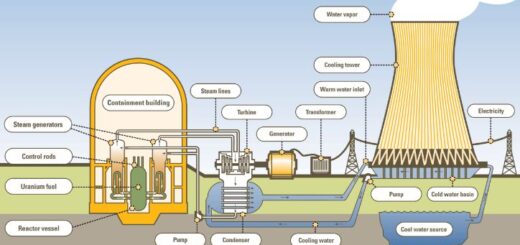Energy resources and forms, Potential energy, Kinetic energy and Mechanical energy
Energy is the ability to do work or to make a change, The measuring unit of energy is the joule, We need energy in different fields in our life, We provide cars with fuel because the combustion of fuel in the car engine enables the car to move (to do work), We eat food because combustion of food in the human body enables the body to carry out various activities (to do work).
Work
When a force acts on a body to move a distance (displacement) in the same direction of such force, it is said that work is done on such object, so, when the displacement increases, the work done increases, When a person affects a wall by a force, he can’t do work because the displacement equals zero, Work can be determined from the opposite relation: Work (W) = Force (F) × Displacement (d).
Resources of energy
There are many resources of energy such as The Sun (permanent resource), Wind, Fuel, Food, Movement of water (such as waterfalls) and nuclear reactions, The developed countries aim to use solar energy (energy produced from the sun), wind energy and the movement of water more than before because they are cheap & clean resources of energy and do not pollute the environment.
The fuel inside the car is similar to the food inside the body of the living organism because buring each of them produces energy that makes the car moves (do work) and the living organism makes its vital processes (do work), The person who pushes a car forward consumes energy because he does work on the car, The person who pushes the wall does not do work because he does not move the wall a distance.
Forms of energy
- Light energy such as the energy produced from the sun, Electric lamp & Kerosene (oil) lamp.
- Sound energy such as the energy produced from loudspeakers and musical instruments.
- Electric energy such as the energy produced from Wind generator and solar cell.
- Chemical energy such as the energy sored in Food, Car battery & Fuel.
- Heat energy such as the energy produced from Heater (uses wood, coal or oil), Gas cooker (oven).
- Nuclear energy such as the energy produced from the reactions in the nucleus of an atom (in nuclear reactors).
- Mechanical energy (potential energy + kinetic energy) such as the energy stored in stretched spring and waterfalls.
Potential energy
Potential energy is the stored energy in the object due to the work done on it, When the potential energy of an object = 30 joules, this means that the stored energy in the object due to work done on it is 30 joules, Factors affecting the potential energy are the weight of the object and the height of the object from the ground, the potential energy stored in an object increases by increasing its weight
Weight (Newton) = Mass (kg) × Acceleration due to gravity (m/sec²)
The value of the acceleration due to gravity = 9.8 ≅ 10 m/sec².
The weight of an object is different from its mass because the object’s weight = Object’s mass × Acceleration due to gravity, the potential energy increases by increasing the height at which the object reaches, The potential energy of an object is directly proportional to its weight & height from the ground.
There is no change in the potential energy when the object moves horizontally because its height does not change as the potential energy is directly proportional to the height of the object from the ground, The potential energy of a body can be calculated from the relation:
The potential energy (P.E.) = Weight (w) × Height (h)
Work = force × displacement
When the work is stored in a form of potential energy notice that the force is indicated by the weight, Displacement is indicated by the height from the Earth’s surface, When the potential energy of an object = zero, this means that the object is placed on the ground.
When a stone is thrown upwards, its potential energy increases because its height increases and the potential energy is directly proportional to the height of the object from the ground, Potential energy will be doubled by doubling the height because the potential energy is directly proportional to the height of the object, where: potential energy= Weight × Height.
When an object falls from up to down, its potential energy decreases gradually because its height decreases and the potential energy is directly proportional to the height of the object from the ground, The potential energy of a falling object at the moment of reaching the Earth’s surface equals zero because the height of the object from the Earth’s surface at this moment equals zero and the potential energy of an object = weight × height.
Kinetic energy
Kinetic energy is the work done during the motion of an object, When the kinetic energy of an object = 40 joules, this means that the work done during the motion of the object is 40 joules, Factors affecting the kinetic energy are the mass of the object and speed of the object.
Mass of the object: If two cars, one has a mass larger than the other, are moving at the same speed, So, the work done needed to stop the car of larger mass is more than that needed to stop the car of smaller mass because the kinetic energy of a moving object increases by increasing the mass of the object, so, the work done to stop it increases.
Speed of the object: If two cars of identical mass and one car is moving faster than the other, so, the work done needed to stop the faster car is more than that needed to stop the car of lower speed because the kinetic energy of a moving object increases by increasing the speed of motion, so, the work done to stop it increases.
The kinetic energy of an object increases when it falls, although its mass is constant due to increasing of its speed as the kinetic energy is directly proportional to the square of the speed of the moving object, The kinetic energy of a moving body is directly proportional to its mass and square of its speed of motion, So, the kinetic energy of a moving body can be calculated from the relation.
Kinetic energy (K.E.) = ½ × Mass × (speed)²
K.E. = ½ m × V²
When the kinetic energy of an object equals zero, this means that the object is at rest (speed = zero), When the moving object stops, its kinetic energy becomes zero because the speed of the object becomes zero and the kinetic energy of an object equals (½ × mass × (speed)²).
When an object is thrown upwards, its kinetic energy decreases because its speed decreases and the kinetic energy is directly proportional to the speed of the object, The work done to stop a moving car increases by increasing the speed of the car due to the increase of its kinetic energy because the kinetic energy is directly proportional to the square of the speed of the moving object.
The kinetic energy will increase four times as the speed of the moving object is doubled because the kinetic energy of a moving body is directly proportional to the square of its speed, The kinetic energy of a moving object increases with the increase of its mass because the kinetic energy of a moving object is directly proportional to its mass.
Mechanical energy
When you lift an object, you do work that is stored in the object in the form of potential energy, When the object falls down, the stored potential energy is changed gradually into kinetic energy, The sum of potential and kinetic energies of an object is known as mechanical energy.
Mechanical energy = Potential energy + kinetic energy
When the mechanical energy of a moving body = 60 joules, this means that the sum of potential and kinetic energies of the body equals 60 joules, The sum of potential and kinetic energies of a moving body = 85 joules, this means that the mechanical energy of the body= 85 joules.
When the object falls down, the height decreases, so, its potential energy decreases, its speed increases, so, its kinetic energy increases, This means that the potential energy is converted gradually into kinetic energy and vice versa when lifting up the body so, at any moment, the sum of potential and kinetic energies of an object equals a constant value known as the Mechanical energy.
At any point: The work done = The mechanical energy of an object = Potential energy + Kinetic energy
The moving object keeps its mechanical energy during motion constant because mechanical energy is the sum of potential and kinetic energies of the object, although the decrease in the potential energy of an object during falling, its mechanical energy remains constant because the decrease occurs in the potential energy of an object during falling equals the increase in its kinetic energy.
At the maximum height of a projectile, its mechanical energy is equal to its potential energy only because the mechanical energy of an object is the sum of potential and kinetic energies of the object and the kinetic energy at the maximum height equals zero, so the mechanical energy at the maximum height equals the potential energy only.
Although the decrease in the value of potential energy of an object during its falling, its mechanical energy still constant because the decrease occurs in the potential energy of an object during falling equals the increase in its kinetic energy, The value of the kinetic energy of an object couldn’t be more than its mechanical energy because the mechanical energy of an object is the sum of potential & kinetic energies of the object.
Energy, Finding Kinetic energy and Potential energy of an object
Potential energy, Kinetic energy & Law of conservation of mechanical energy



